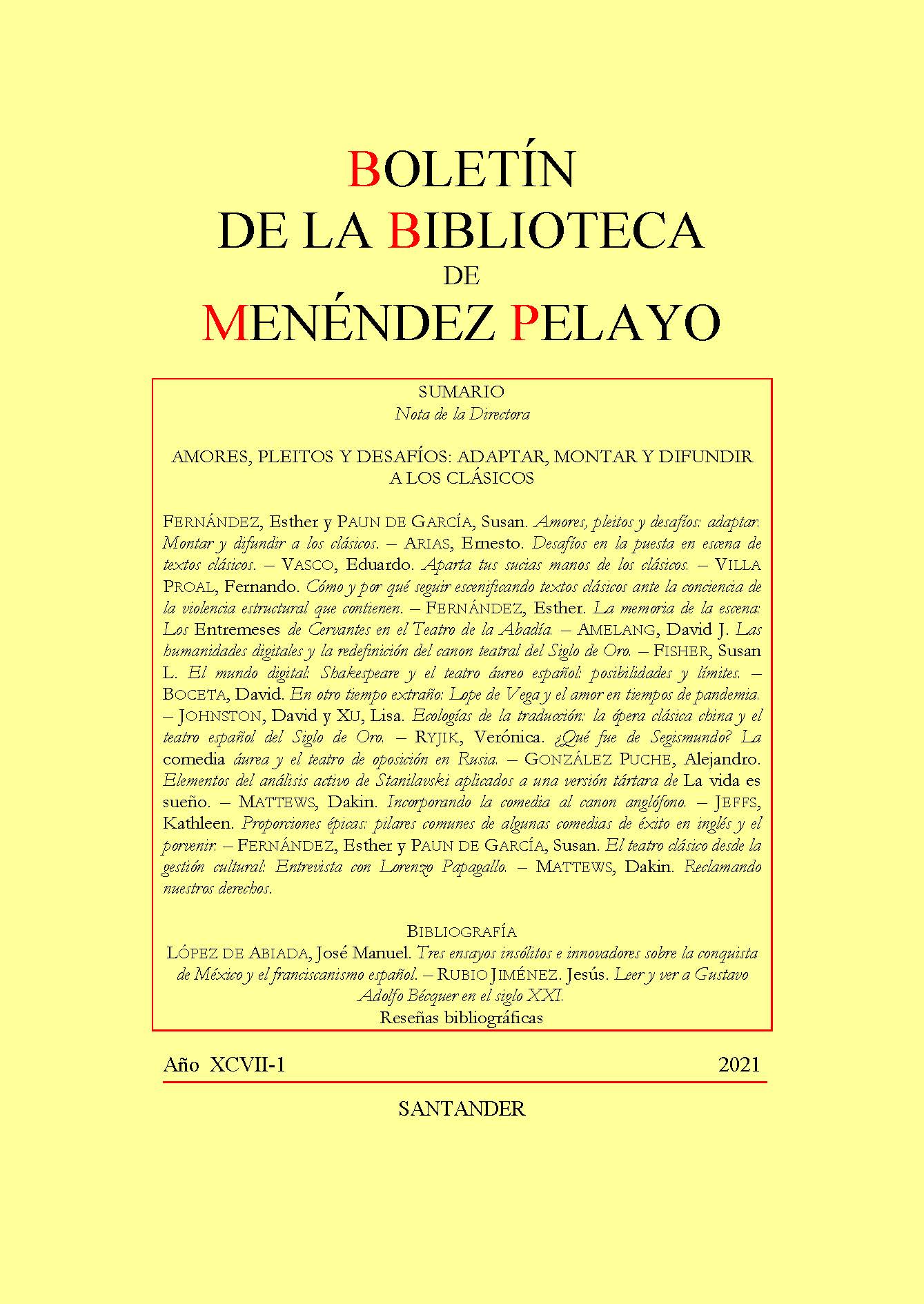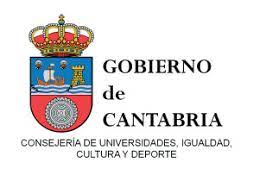Elements of the active analysis of Stanislavski applied to a Tatar version of La vida es sueño
DOI:
https://doi.org/10.55422/bbmp.275Keywords:
Life is a dream, Calderón, Active analysisAbstract
The work focuses on analysing the staging of Life is a Dream, which I undertook with the Tartar State Academic Theatre company, “Galiasgar Kamal”, in Kazan, Russia, in 2008, (called Tagdir) presented in various theatres of the Russian Federation and the Ibero-American Theatre Festival of Bogotá. The exercise practiced with these actors from the Russian school consists of analysing the works based on the action, on what happens, without being confused by what the characters say. This methodology called Active Analysis was developed by Konstantín Stanislavski and María Ósipovna Knébel and uses simple concepts such as events and given circumstances in the scenes and the super-objectives of the characters. This analysis is generally used for psychological dramas, but it can be an interesting model for dealing with the Spanish Golden Age comedies.
Downloads
Publication Facts
Reviewer profiles N/A
Author statements
Indexed in
- Academic society
- Sociedad Menéndez Pelayo
- Publisher
- Sociedad Menéndez Pelayo
Global Statistics ℹ️
|
514
Views
|
232
Downloads
|
|
746
Total
|
|
References
CALDERÓN DE LA BARCA, Pedro. (1960). Obras Completas, Tomo II. Edición de Ángel Valbuena Prat. Madrid. Aguilar.
-----. (1981). El gran teatro del mundo. Edición de Domingo Ynduráin. Madrid. Alhambra.
-----. (1998). La vida es sueño. Edición de Evangelina Rodríguez Cuadros. Madrid. Espasa.
CHÉJOV, Mijaíl y María KNÉBEL. (2018). 16 lecciones de actuación y otros materiales. Compilación y Traducción de Alejandro González Puche, Ma Zhenghong. Ciudad de México. Paso de Gato.
GONZÁLEZ PUCHE, Alejandro. (2012). Pedro de Urdemalas, la aventura experimental del teatro cervantino. Vigo. Academia del Hispanismo.
KNÉBEL, María Osipovna. (1991). Poética de la pedagogía teatral. México. Siglo XXI.
-----. (1996). El último Stanislavsky. Madrid. Fundamentos.
-----. (2000). La palabra en la creación actoral. Madrid. Fundamentos.
RODRÍGUEZ CUADROS, Evangelina. (1998). La técnica del actor español en el barroco. Hipótesis y documentos. Madrid. Castalia.
-----. (2002) Calderón. Madrid. Síntesis.
STANISLAVSKI, Konstantín (2007a). El trabajo del actor sobre sí mismo en el proceso creador de la encarnación. Barcelona. Alba.
-----. (2007b). El trabajo del actor sobre sí mismo en el proceso creador de la vivencia. Barcelona. Alba.
TUMANISHVILI, Mijaíl Ivánovich. (2005). Introducción a la dirección(Cuando aún no se han iniciado los ensayos). Edición Escuela de Teatro Dramático. Moscú. Traducción de Alejandro González Puche, en proceso de edición.
Downloads
Published
How to Cite
Issue
Section
License
Copyright (c) 2022 Alejandro González Puche

This work is licensed under a Creative Commons Attribution-NonCommercial 4.0 International License.







